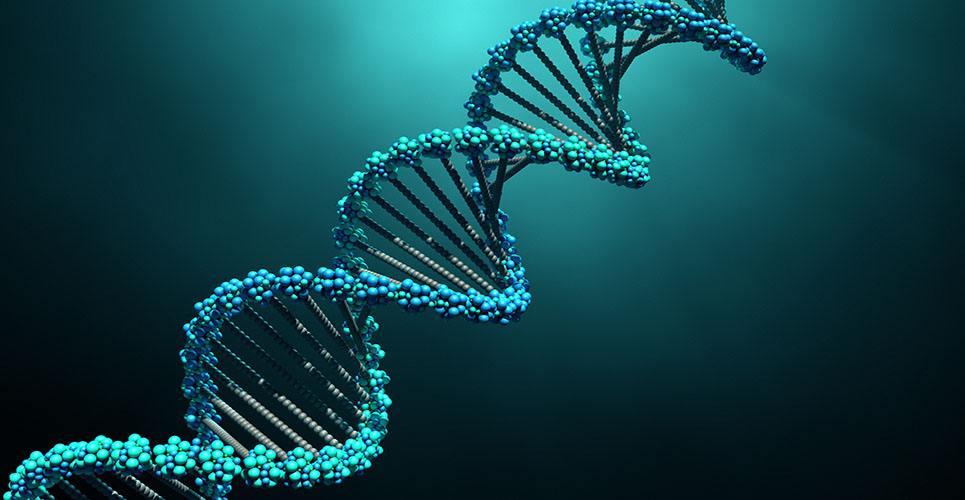Carmina Más Arcas
PhD
Chief of the Pharmacy Service
Fundación Instituto Valenciano de Oncología
Valencia
Spain
The human genome is organised into several tens of thousands of genes, contained in 23 pairs of chromosomes. The recent publication of the human genome sequence, along with the upsurge of pharmacogenomics and new advances in biotechnology, lead us to envisage significant changes in the pharmaceutical treatment and care of the patient.
Rationale for the development of gene therapy
Gene therapy is a therapeutic model devised at the end of the last century that involves the insertion of genetic material for the purpose of improving or curing certain pathologies in the individual. It is based on the central dogma of molecular biology – that information stored in DNA in the form of genes is transcribed into mRNA and then translated into proteins; and that the genetic code is universal and applies both to prokaryotes and eukaryotes (see Figure 1).
[[HPE07_fig1_51]]
The efficacy of gene therapy depends upon:
- The suitability of the method used to transfer genetic material into the target cells.
- A sufficient level of protein expression in order to produce the desired effect.
The use of gene therapy was conceived almost exclusively in somatic cells, except in cases where the genetic pathology is linked to germinal cells.
In order for a disease to be considered amenable to gene therapy, a number of criteria must be met:(1)
- The gene responsible must be known.
- The efficacy of that gene must be verified.
- The disease must be monogenic – that is, caused by a single gene (predominant at present).
- Target cells must be accessible.
- Target cells must have a strong regenerative capacity.
Areas of progress
Completion of the “Human Genome Project” in 2001, with results contributed by the American National Institute of Health, the Department of Energy and the private company Celera Genomics, was an encouraging step forward in the treatment of genetic diseases. However, many gene therapy projects were carried out before publication of the results (see Table 1).
[[HPE07_table1_51]]
The widely varying aims of gene therapy research projects in humans demonstrate the complexity involved in its use:(2)
- Repair of or compensation for a defective gene.
- Improved immune response to a tumour or pathogenic agent.
- Protection of populations of vulnerable cells against chemotherapy.
- Genetic marking for tracking recurrent tumours.
- Direct destruction of tumour cells.
Having set the aims of a gene therapy project, a strategy will be designed to achieve them. Two strategy models are compared in Table 2.(3) In addition therapy gene mutations are not replaced, but independent genetic material is inserted to restore the affected function, unlike substitution therapy, in which the altered genetic material is replaced with other correct material.
[[HPE07_table2_52]]
The aim of gene therapy is to address the cause of a genetic disease directly (ie, the mutation), unlike those treatments based on intervention of any given effects. Gene therapy is designed on the basis of knowing beforehand what the result of that mutation is.
In general terms, there are no good or bad genes, just systems with different thresholds and components with varying levels of sensitivity to disturbances. Compared with other animals, humans have an accumulation of genes with functions that are directed at the immune system, nervous system, homeostasis, haemostasis and apoptosis.(4)
With regard to the diseases amenable to application of gene therapy, although they are numerous (see Table 3), it is cancer that raises the highest expectations. Special mention has to be given to the p53 gene, linked to the majority of malignant tumours, in which it is either altered or suppressed, and which is being implanted in a number of ongoing multicentre clinical trials.
[[HPE07_table3_52]]
In oncological treatment, the gene therapy options set out in Table 4 are considered to be of special importance by some authors.(5) Brain tumours, breast cancer, colorectal cancer, melanoma, neuro-blastoma, ovarian cancer, renal carcinoma, lung cancer and other solid tumours have all been suggested as appropriate for the application of gene therapy.(6) In Spain, experience with gene therapy includes 10 multicentre clinical trials since the first was approved in 1994 (see Table 5); different vectors are used according to the aim to be achieved.(7)
[[HPE07_table4_53]]
[[HPE07_table5_53]]
In the next article in this series we will look at the role of the hospital pharmacy in gene therapy.
References
- Millán González R, Regueiro JR. Inmunoterapia celular. In: 3er Curso de biotecnología para farmacéuticos de hospital. Madrid: CIEMAT, Ministerio de Ciencia y Tecnología, CNB; 2002.
- Cortner J, et al. Fundamentos de la biología molecular. In: De Vita V, Hellman S, Rosenberg S, editors. Cancer – principios y práctica de oncología. 5th ed. 1999. p. 3-34.
- Bueren JA. Marcado genético y terapia génica de enfermedades monogénicas. In: 3er Curso de biotecnología para farmacéuticos de hospital. Madrid: CIEMAT, Ministerio de Ciencia y Tecnología, CNB; 2002.
- Domínguez O. Genómica y medicina. In: 3er Curso de biotecnología para farmacéuticos de hospital. Madrid: CIEMAT, Ministerio de Ciencia y Tecnología, CNB; 2002.
- Bout A. Gene therapy. In: Crommelin DJA, Sindelar RD, editors. Pharmaceutical biotechnology. New York: Harwood Academic Publishers; 1997. p. 167-84.
- Castilla San José L, et al. VIII Jornadas de la SE de Medicina Legal y Forense. Málaga; 1998.
- Ruiz S. El Grupo de trabajo de Biotecnología (BWP) de la EMEA. In: 3er Curso de biotecnología para farmacéuticos de hospital. Madrid: CIEMAT, Ministerio de Ciencia y Tecnología, CNB. 2002.
- Aventis Pharma. Gene therapy protocols.
Useful websites
Centro de Estudios del Genoma Humano del Laboratorio Nacional de Los Álamos
W:www-ls.lanl. gov/index.html
Human Genome Project Information
W:www.ornl.gov/hgmis
The Gene Letter – Electronic Genetic Newsletter
W:www.geneletter.org
Oncolink
W:www.oncolink.com
Genlink
W:www.genlink.wustl.edu
Cancer News
W:www.cancernews.com/quickload.htm

